Show Coverage: DEMA 2016
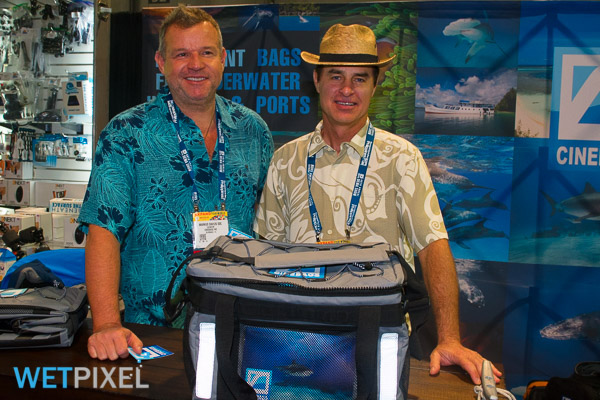
Cinebags
Cinebags has been making specialist luggage for the film industry for some time. They have recently branched out into products aimed at underwater image makers. Marcus Davids and Gregory Sweeney took us through the range.
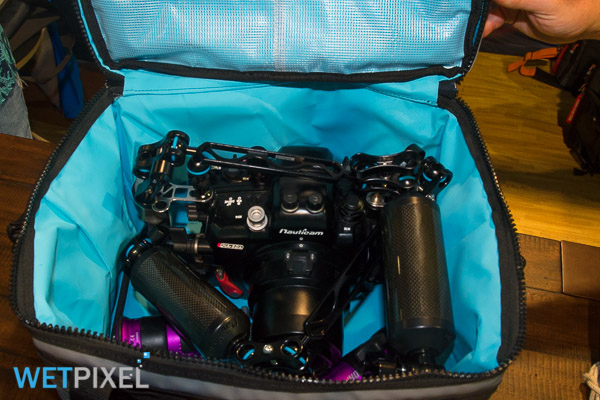
The CB70 Square Grouper is a large bag designed to provide protection for a fully assembled housing. Markus told me that he can get his 1DX Mark II, along with its port and strobe arms into it. It is constructed of heavy duty tarpaulin fabric, has internal and external mesh pockets and can be folded flat for transport
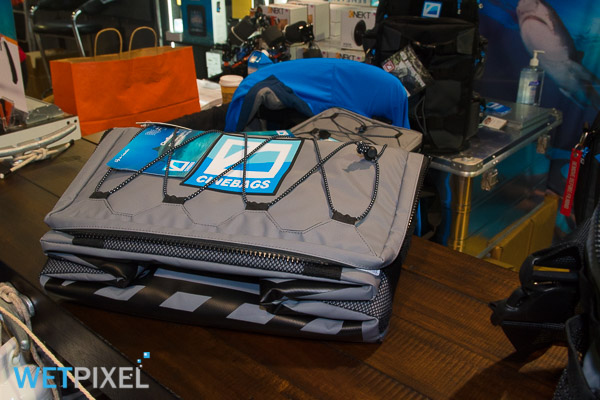
The bag can also be used as a portable rinse tank. The Square Grouper is available now, priced at $159.
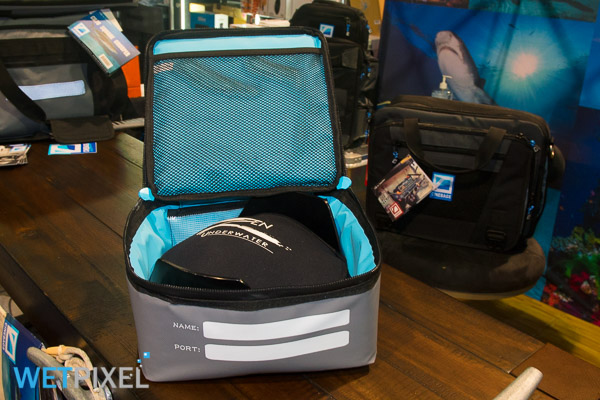
Cinebags has designed a series of port cases, with them being available for large, medium and small domes as will as one for macro ports. These are again constructed of heavy duty tarpaulin fabric and have mesh accessory pockets.
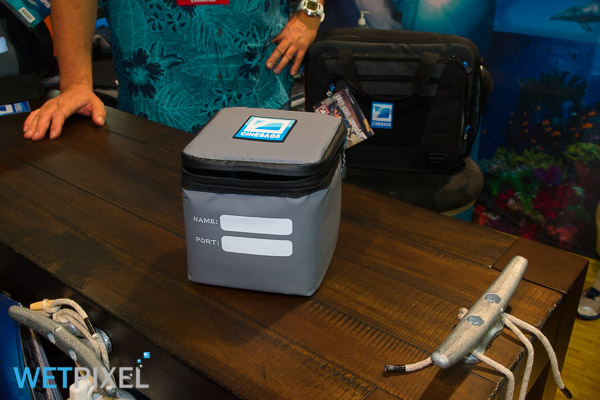
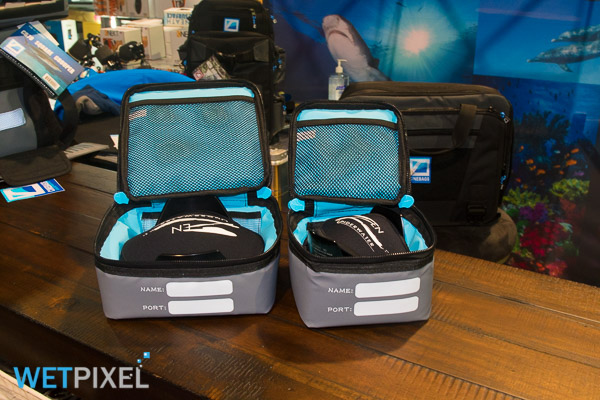

These are expected to ship in the next few weeks and are priced at $70, $65, $60 and $60 respectively.
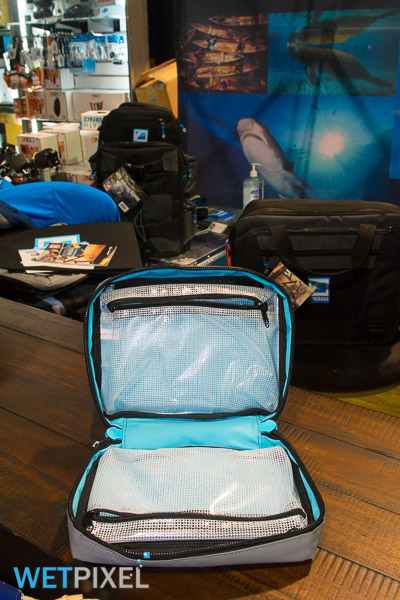
Lastly in the dive specific range, the company has designed a tool/spare parts bag. It is priced at $47.

In the existing Cinebags range, Markus and Gregory showed me their Revolution backpack. Markus explained that he can get a housing into the main compartment as well as ports and lenses.
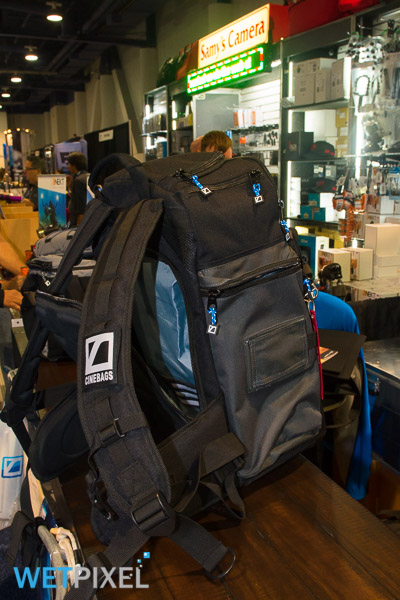
Access is via a rear zip for security and it can carry a 17” or smaller laptop. It retails at $259 and in common with all their existing line is available now.
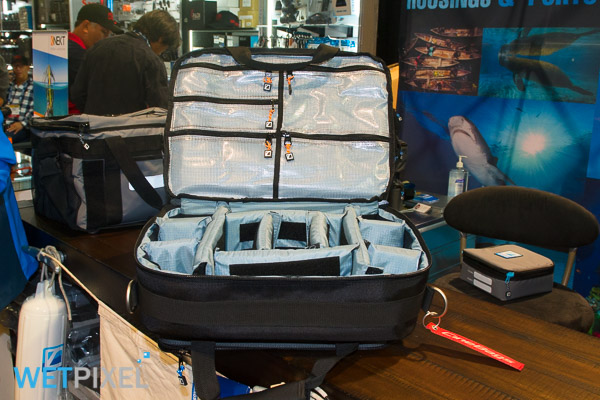
The next product is the Lens Smuggler.
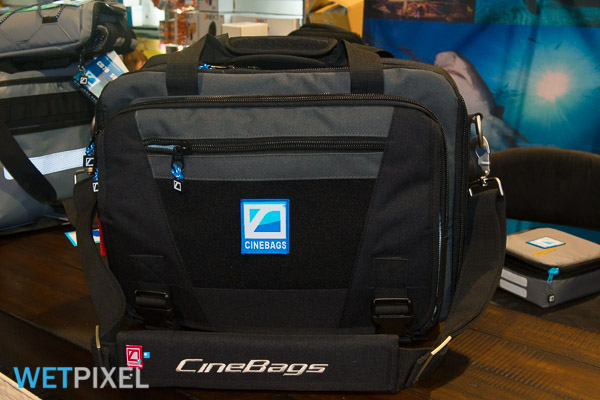
Designed to be the “personal item” allowed in cabin by airlines, it can carry a camera body and several lenses as well as a laptop.
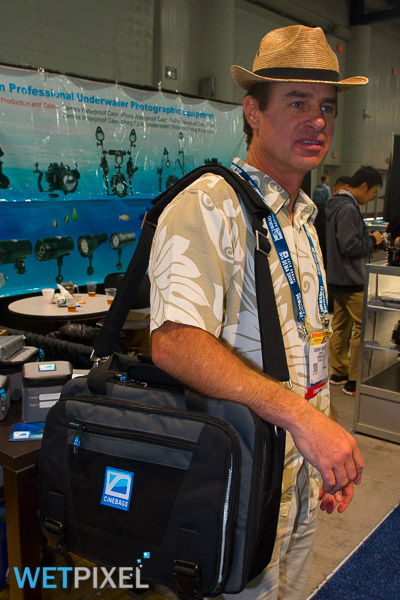
It also has a slot so that it can be attached to a roller bag. Price is $229.

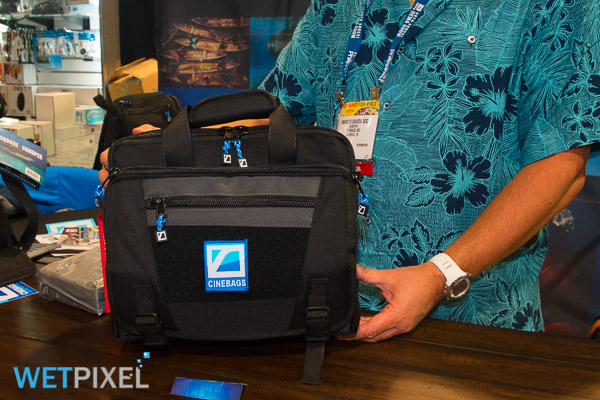
The last product was the GoPro Bunker. Designed originally for GoPros, this bag would also suit a compact camera. It is priced at $169.
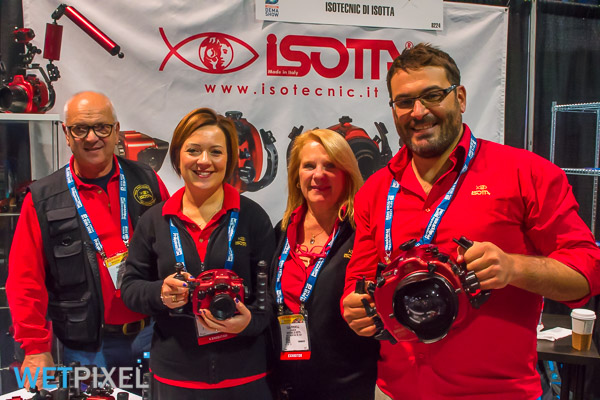
Isotta
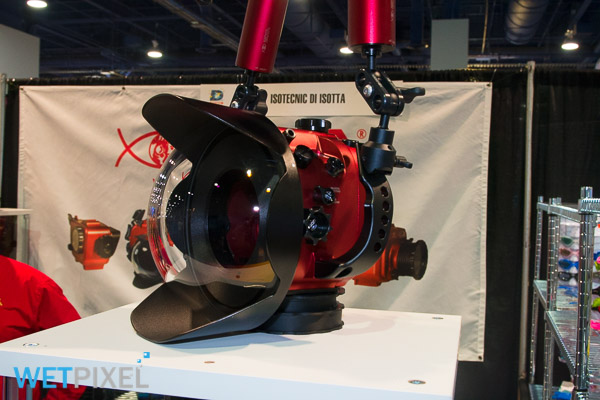
The Italian company with its distinctive red housings has launched its extensive range into the US market. Simon Lorenz and Elisa Isotta showed me through their products. Starting with SLR housings, each housing is available with with Nikonos or S6 bulkheads (for around an additional $100), as well as fiber optic. There is also an additional port for vacuum or other accessories.
Isotta offers a hot shoe mounted opto-electrical converter if required.
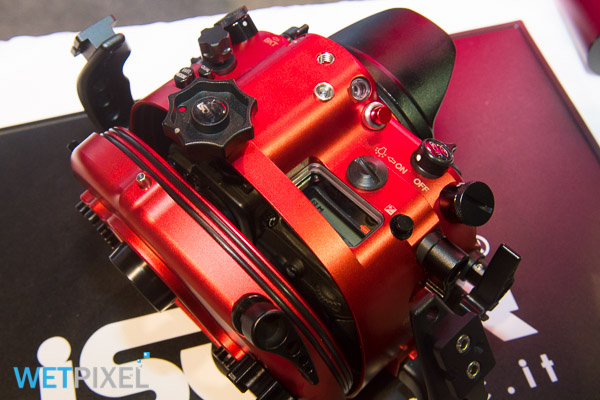
Simon showed me the company’s unique port latch. The rear door is entirely removable and locates at the bottom with two pegs. The rotating catch at the top then draws the door’s dual O ring seal into the housing as it is rotated. Simon suggested that thus reduces the risk of the O rings extruding.
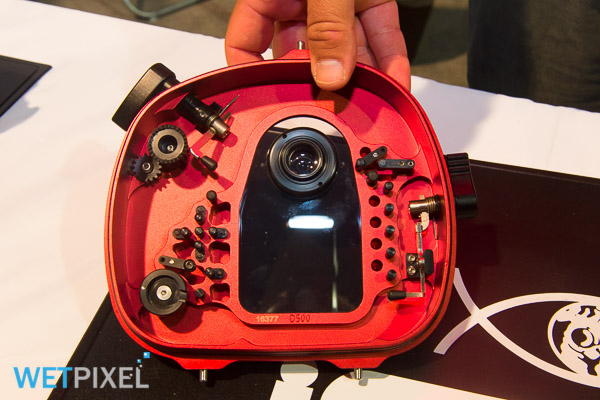
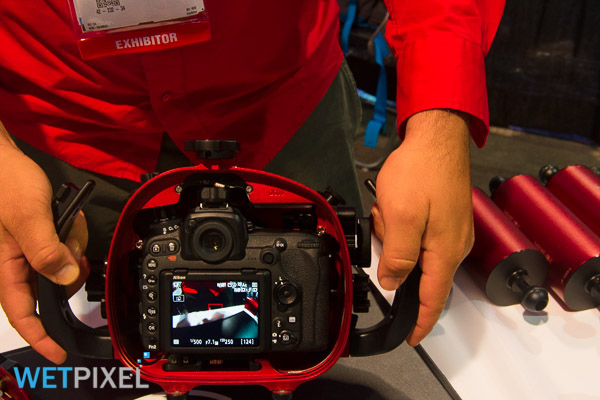
The company uses a bayonet lens port locking system that is directly compatible with Sea&Sea’s and they offer conversion rings for Aquatica, Seacam, Subal and Hugyfot ports.

Strobe arm mounts are T plates on the handles, with an optional “roll bar” that can accommodate additional mounting points.
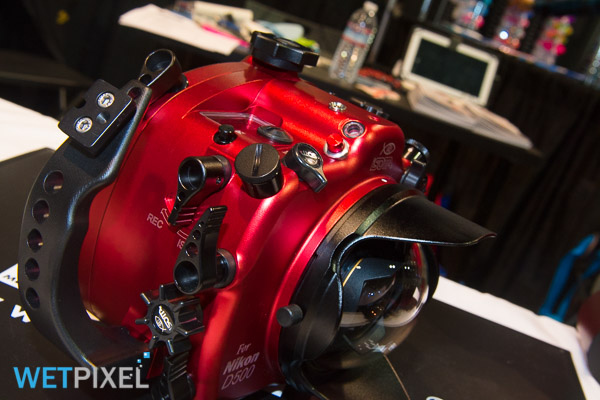
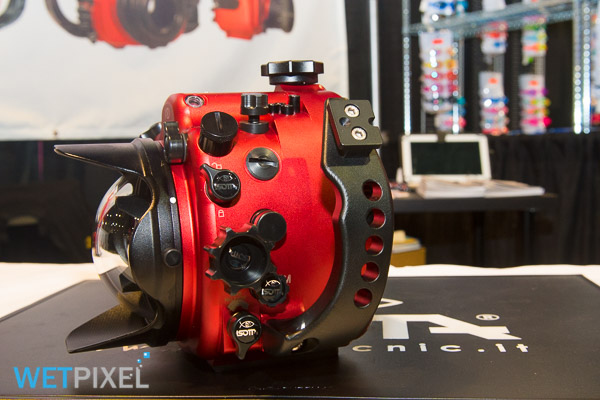
Lastly, the bases of the housing have extended rubber flats that make the housing very stable.

Isotta’s housing for the D500 features an audible and visual leak alarm (the other housings in the range are visual only) and an external on/off control for the opto-electrical converter if it is required. The housing will retail at $2700, or $2800 with optical trigger and electrical bulkheads.
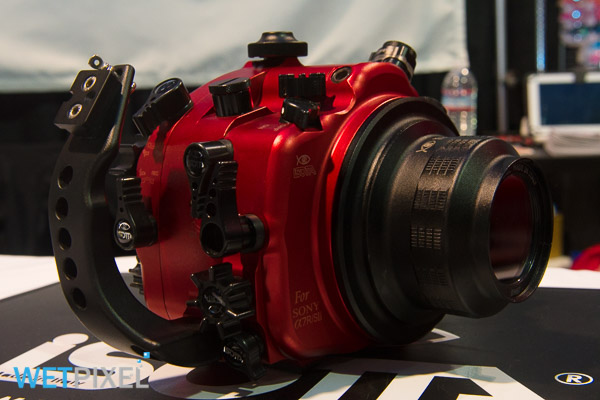

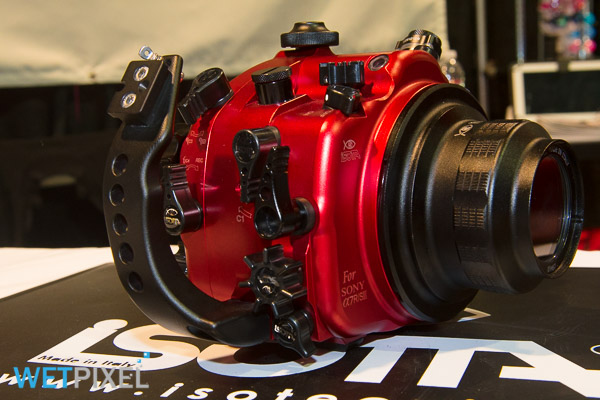
We then looked at their housing for the Canon 5D Mark III. It has the same features as the above and retails at $2700 with electrical bulkheads.
Isotta also offers SLR housings for Nikon: D750, D810, D800, D600/610, D7100/7200 as well as some legacy housings. Their Canon offerings are: 5D Mark III, 7D Mark II, 70D.
There is port and extension ring support for a wide variety of wide angle, fisheye and macro lenses.
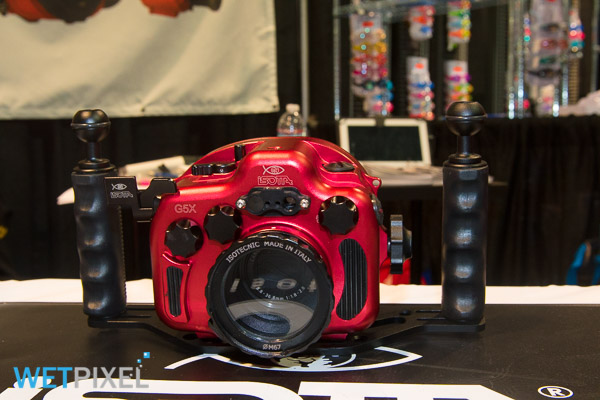

In terms of mirrorless cameras, Isotta offers support for Sony a7 Mark II ($2400) and Panasonic GH4 ($1800) with housings for the Panasonic GH5 and Olympus E-M5 Mark II coming soon. There is a wide range of ports to support these and flash triggering is either via electrical or optical converters, depending on the camera model.
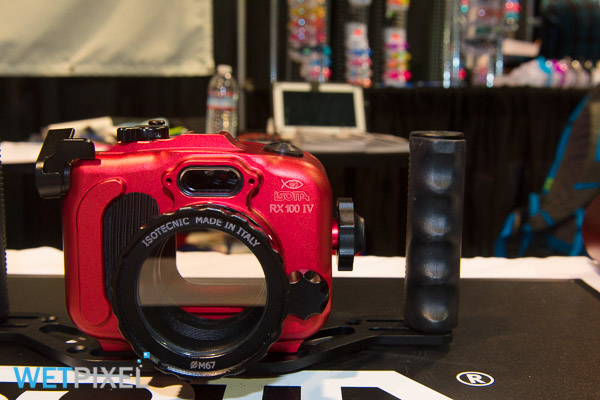
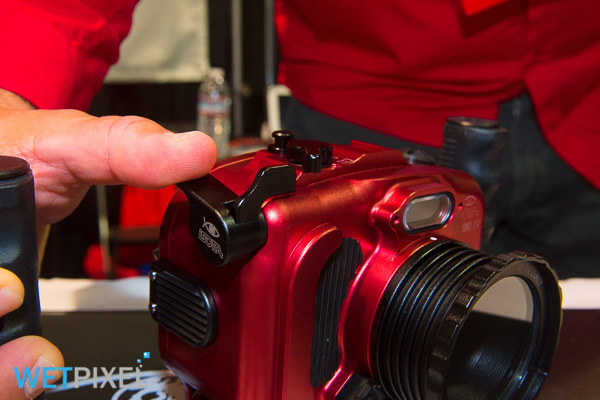
Isotta offers a wide range of compact camera housings. These all offer access to all camera controls and flash triggering via fiber optic slaving off the camera’s own flash. In addition, the company’s dual O ring and rotating latch control are also featured. Shutter releases are via a lever, and there are extended levers available if the user is holding the camera by a grip. Current models are available for Canon: G5X, G7X, G7X Mark II, G15, S120, S110 and G11/12. Prices range from $1000 to $800. For Sony, their housing supports RX100 Marks II, 111 and IV and they are awaiting the Mark V to test, but it is expected to be compatible. They are priced at $800.
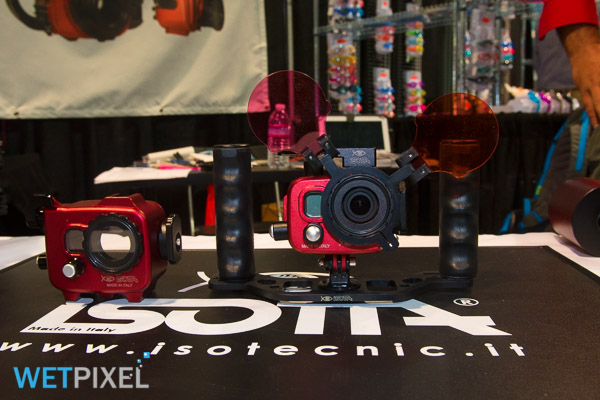
For GoPro, there is support for the HERO4 Silver ($400) and another for HERO 3/3+ and 4 models with LCD Backpaks ($500). They are rated to 200m and there is a range of accessories available.
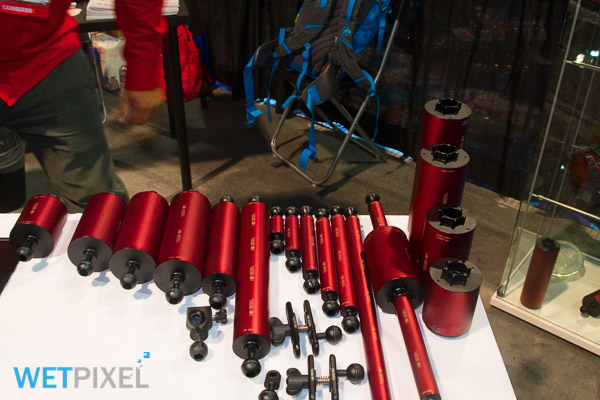
Simon then showed me their range of arms, These aluminum arms are available in three diameters; 2.5, 5 and 7mm, each offering additional buoyancy. The amount of buoyancy each arms offers are laser etched into the arm for easy reference. They are available in wide variety of lengths, from 45 to 400mm. There is a wide range of clamps and ball mounts for arm system too.
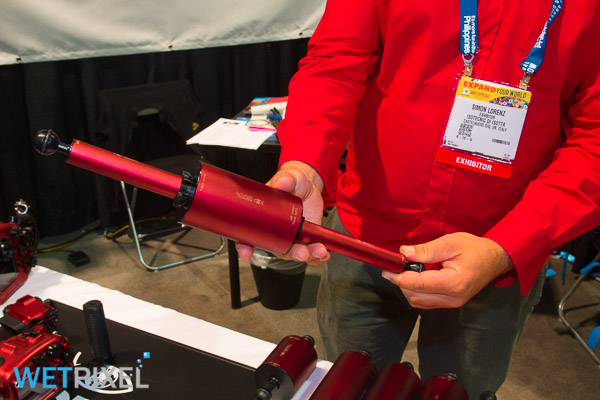
They also a float tube system. This slides onto their 2.5mm and can be positioned anywhere along them to provide buoyancy close to where it is needed, for example near heavy strobes.
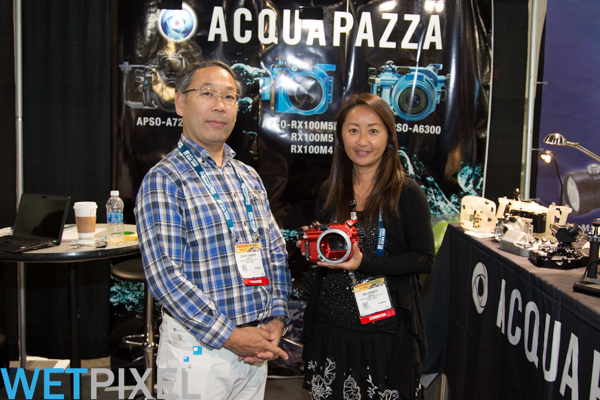
Acquapazza
Acquapazza had several new models so we headed over to meet with Toshiki Yamamoto and his translator Miki Bultman. For the Sony a7 Mark II, there are two versions. The standard version is rated to 100m, while the Deep version is 200m. This is achieved by increasing the thickness of the glass and adding stronger springs.

The APSO A72 housing also features an 110mm throat, which allows the rear installation and use of wide diameter lenses. Toshiki demonstrated this by installing a Sony 28-135mm Cinema lens.
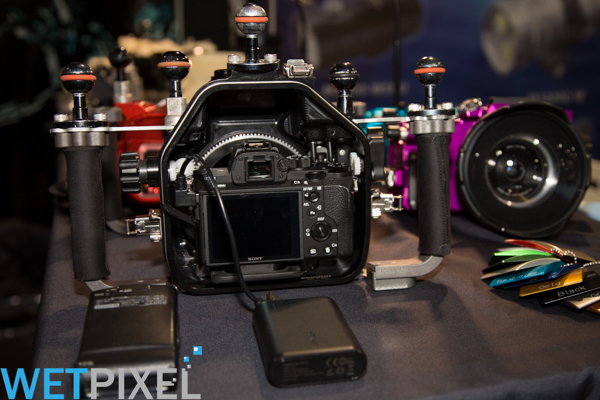
It has the option of using a hotshoe mounted mini flash or a battery pack.
All the housing’s buttons are made of 8mm stainless steel with bevelled ends and are angled to allow access and differentiation. The housing’s latch is constructed entirely of aluminum for increased strength.
Continuing with ports, Toshiki explained that the reason for offering a wide range of ports is to ensure that individual lenses are correctly centered.
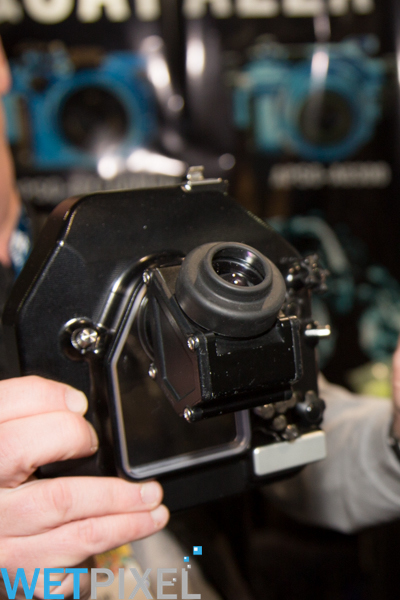
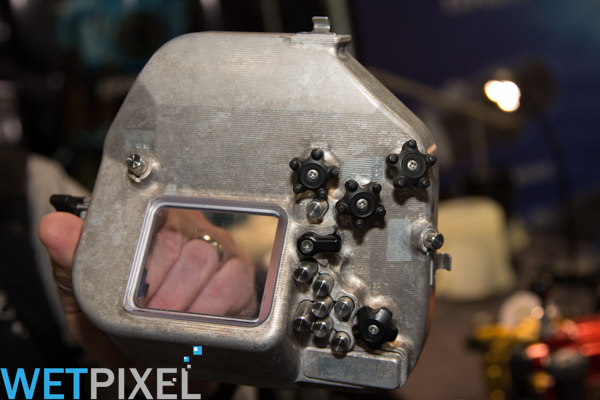
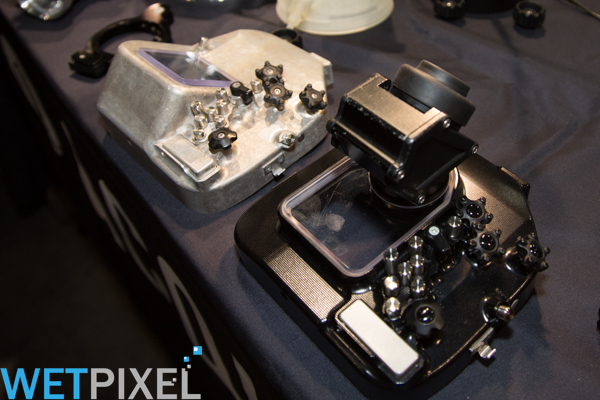
The housing has 10° angled handles and can be supplied with either a viewfinder or a slant viewer for the cameras LCD. In the case of the latter, a lever allows the user to vary the LCD’s angle.
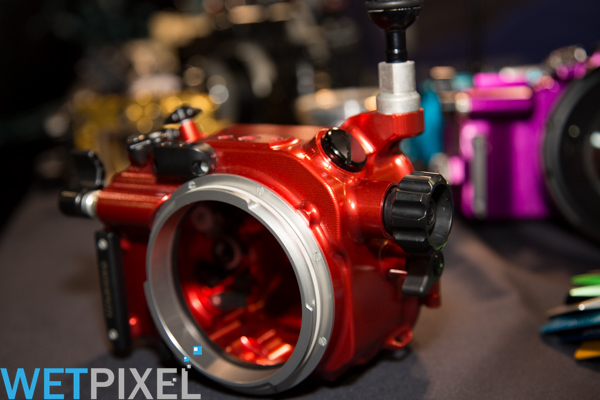
The APSO A6300 also allows the rear installation and use of wide diameter lenses like the Zeis Touit f2,8 and the Sony 90mm macro.
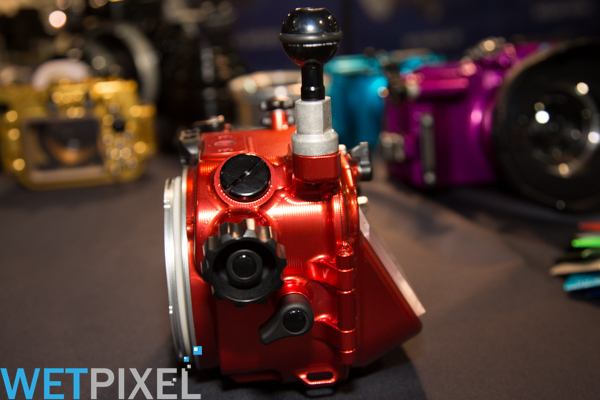
It also features 8mm diameter buttons and has a slanted rear window for viewing the viewfinder
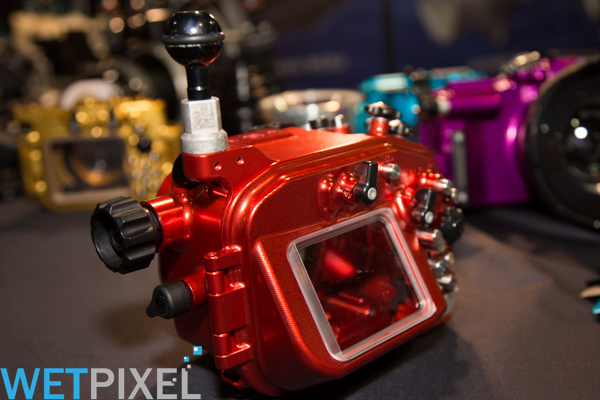
Among the wide range of lens ports that are available, Acquapazza offers a port with a focus control. This allows the use of lenses with zoom and focus as the zoom can be controlled via the in-camera gear and the focus via the port gear. Acquapazza offers a lens gear for the 16-50mm f3.5-6.5 lens that offer power zoom via the housing’s gear.
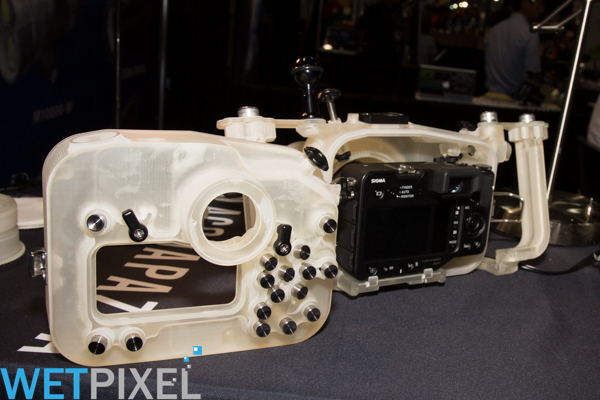
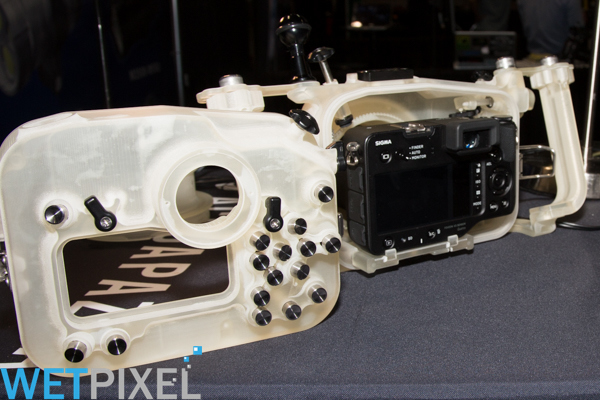
The last housing we looked at was a prototype moulding for the Sigma SD Quatro. This will feature an interchangeable lens port and 10mm diameter buttons.
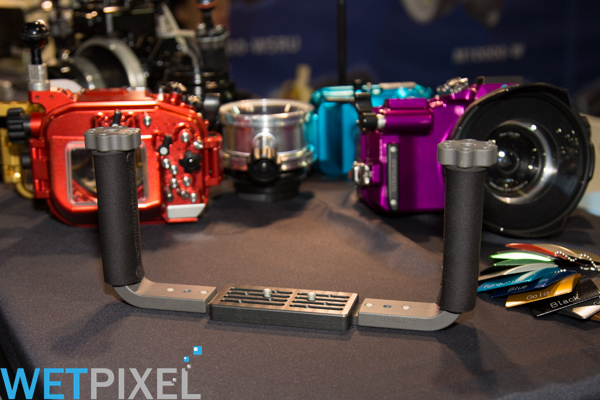

Acquapazza also offers a very robust camera tray and a side flip diopter bracket.
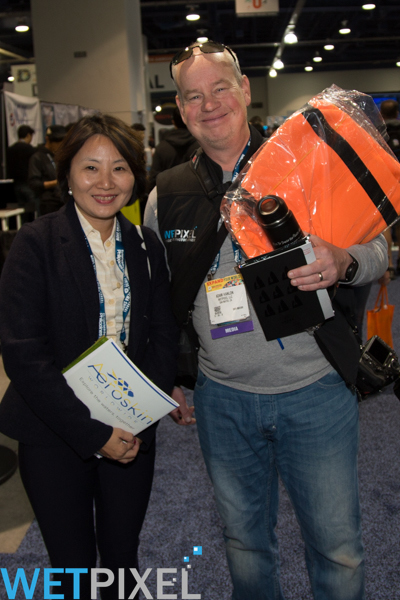
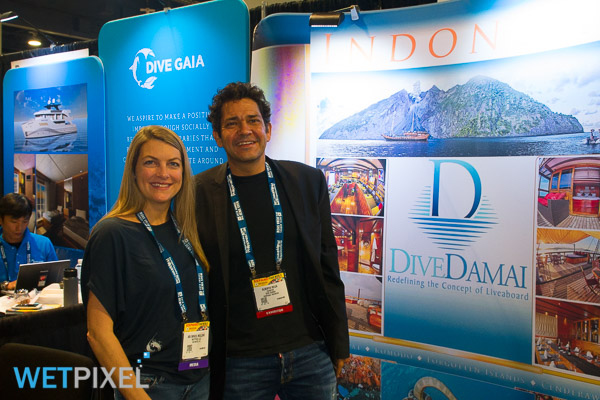
i-Torch
Next we walked over to the i-Touch booth and met with Doug Taleski.
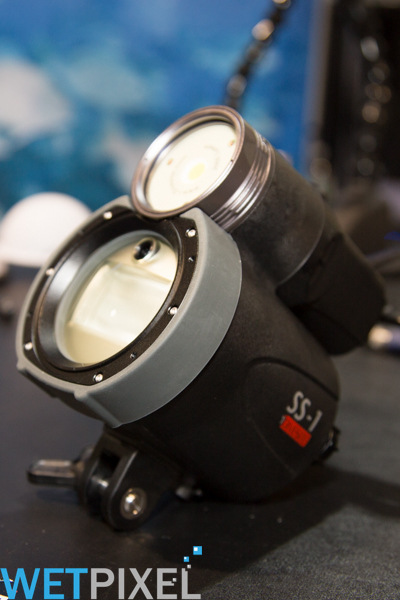

The first thing we checked out at i-Torch was the Symbiosis SSI. The light is a video light and still photography strobe in one unit with full manual power. The Symbiosis SSI retails for $599 and is shipping now.
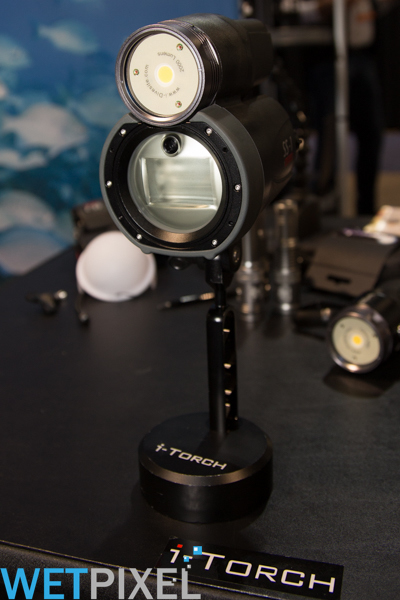
The video head is 2000 lumens and runs on a lithium ion battery. It has a 2 hour burn time at full power.
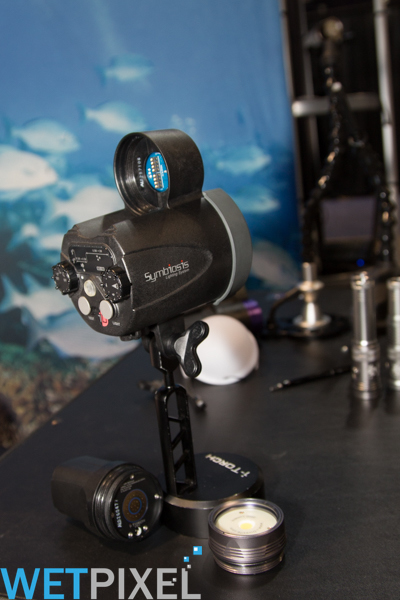
The strobe head has a guide number of 24 and can go through 500 full power cycles. The recycle time is 2 seconds or less.
The video light can also be used as a focus light that will turn off when the strobe is fired.
The led head is removable and can also be swapped out with a 4,000 lumen head. The 4,000 lumen head retails for $299.
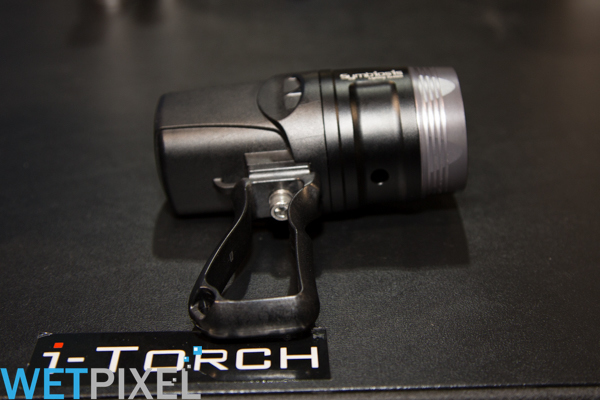
There is also an adapter that will modify the video light into a handheld dive light.
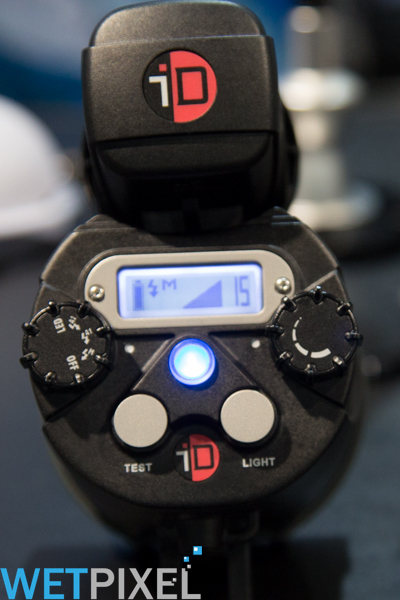
Next we checked out the Symbiosis SS2 which has an led screen on the back, a guide number of 32 as well as a 2,000 lumen head. The SS2 retails for $699.

Accessories for the strobes include a dome diffuser that is available now and retails for $35.
A snoot is also in development. It will retail for $200 and will ship in early 2017.
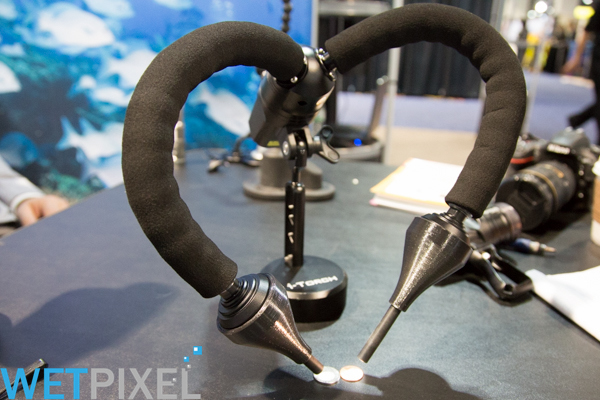
Lastly, we checked out the Bunny, a dual 2,000 lumen light unit that is bendable and snootable. It retails for $500.
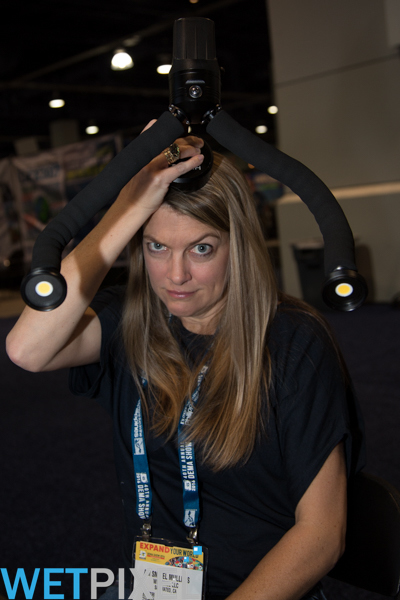

Backscatter

We headed over to the Backscatter booth where we met up with Jim Decker of Backscatter and Andy Bausk of Olympus.
We started with the new Olympus OM-D E-M1 Mark II camera. The brand new 20 MP camera retails for $1999 and will begin shipping in December.
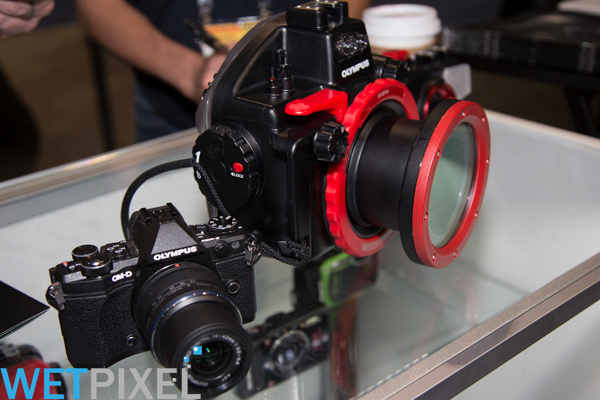
The camera shoots 4k video, has 121 auto-focus points, shoots 18 frames per second mechanically, 60 frames per second electronically (RAW), is dust, splash and freeze-proof, and has 5-axis image stabilization.
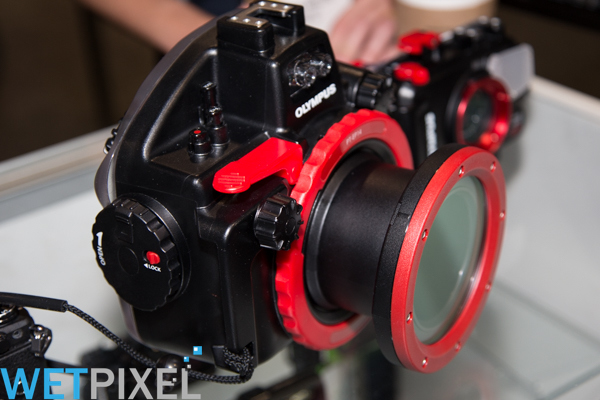
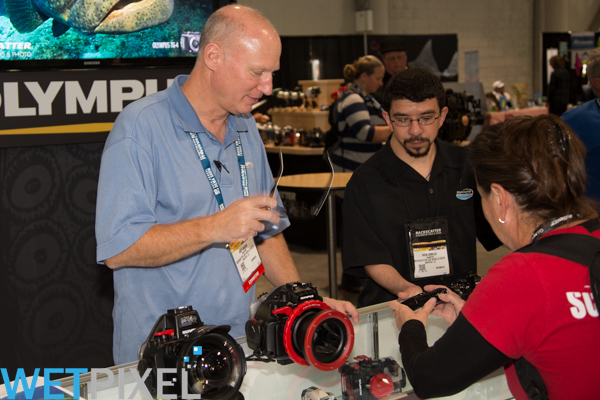
The dedicated underwater housing is called the PT-EP14 and is rated to 60m. The knobs have also increased in size to give them a more ergonomic feel. It retails for $1299.
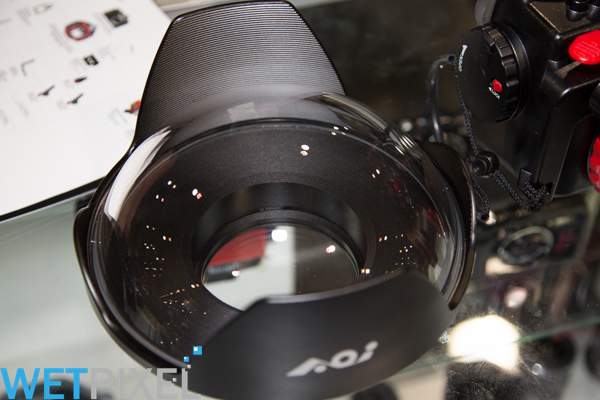
Two new lens ports have been released. They are the PPO-EP03 macro port and the PPO-EP02 8” glass dome port. They retail for $429.99 and $899.99, respectively.
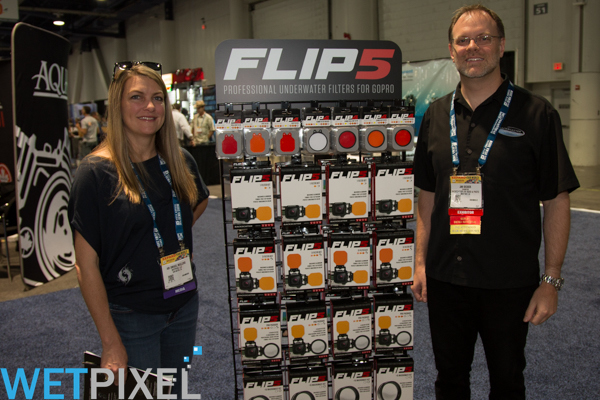
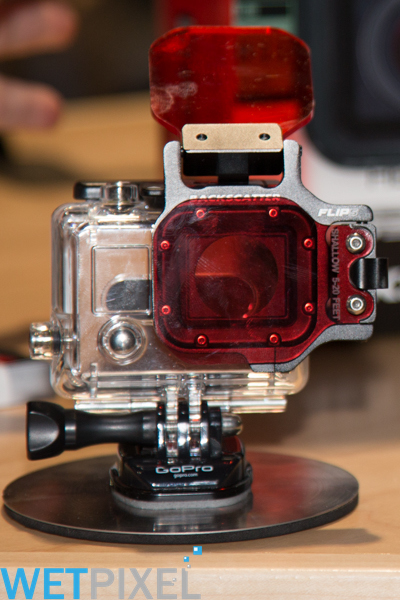
Next we looked at the GoPro Hero 5 and accessories. We started with the Flip 5, which will be out in January. The Flip 5 will be compatible with the Hero 3, 3 +, 4, and 5.
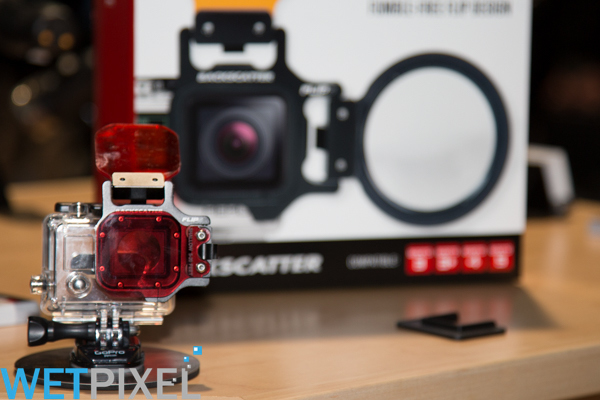
There are 3 different filter options according to the water depth, as well as the MacroMate Mini +15 diopter. Each can be purchased individually or as a set for $179.
- Introduction.
- Booth Visits: Seacam, Aquatica, ULCS and Nauticam.
- Booth Visits: XIT404, SAGA, Vivid Pix, Lights and Motion, Subal and Ikelite.
- Wetpixel/DivePhotoGuide underwater imaging party.
- Booth Visits: CineBags, Isotta, Acquapazza, iDivesite, Backscatter
- Booth Visiits and Stephen Frink: Gates, BS Kinetics, Fantasea, Fisheye, Keldan, Sea&Sea, Inon